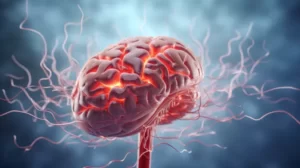Migraines are intense, debilitating headaches that affect millions of people worldwide. They can last for hours or even days, making it difficult to work, socialize or take part in favorite activities. Sufferers often describe a pulsating, throbbing sensation that’s usually on one side of the head. Though it is painful, the feeling is temporary and leaves a lasting mark on the brain. Those who have experienced these painful events might have noticed something called “hyperintensities” on their MRI scans.
Hyperintensities and Cognitive Decline
Hyperintensities are described as bright spots on MRI scans. These indicate changes in the white matter, the brain stem, and the cerebellum region. Hyperintensities are more commonly observed in the brains of female migraine sufferers. Earlier research had prompted concerns that these could be associated with risk factors for atherosclerosis, an increased risk of stroke, and cognitive decline.
But new findings from a nine-year follow-up study provide some good news for migraine sufferers, as it shows that complications from hyperintensities might be less severe than once believed. The study discovered that women with migraines didn’t appear to experience a decline in cognitive ability over time when compared to those who didn’t have them.
Dr. Linda Porter, who serves as a pain health science policy adviser in the Office of the Director at the National Institute of Neurological Disorders and Stroke (NINDS), says this type of long-term follow-up study is the first of its kind. There is no evidence of cognitive decline among these women, which should be seen as a positive.
Further Research Needed
Nevertheless, there is more work to be done in the field of migraine research. Scientists need to further understand whether hyperintensities are related to ischemia and ischemic stroke risk. The hope is that this additional investigation may uncover more information about migraines and, possibly, new treatments or preventative measures to manage the condition better.
Coping with Migraines
Living with migraines is challenging, but it is essential that individuals do everything possible to minimize the triggers and manage the intensity of episodes. It might be helpful to maintain a diary tracking headaches and potential triggers, which can help determine when a migraine is about to surface. This way, you will be better prepared to avoid those triggers and manage the situation.
If migraine attacks are already taking place, it may help find a dark, quiet room where you can rest without disturbances until the pain subsides. Placing an ice pack on the forehead or at the back of the neck can help soothe the painful throbbing sensation people typically experience.
Over-the-counter pain relievers, such as ibuprofen and aspirin, along with prescribed medication, may also help manage migraine symptoms. However, it is essential to consult with a healthcare professional to ensure safe and effective use of these medications.
Additionally, practicing relaxation techniques like deep breathing exercises and meditation may help cope with migraines and alleviate stress – a known trigger for these headaches.
Understanding hyperintensities better and how they relate to migraines can help demystify this painful condition further. But in the meantime, sufferers can take solace in the fact that there’s no evidence of long-term cognitive decline associated with them.
While managing migraines can be challenging, don’t let the temporary pain and inconvenience of the symptoms overshadow the good news that cognitive ability remains intact.



